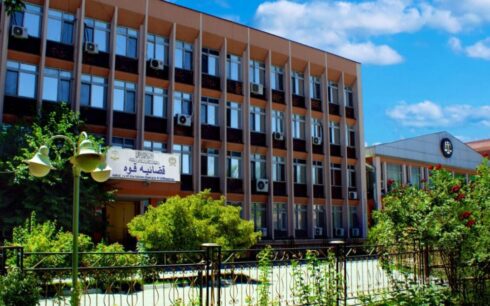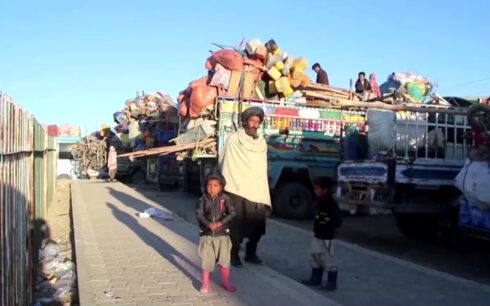A UK-based rights group on Thursday launched an interactive map documenting rampant human rights abuses and violence against civilians since the Taliban seized power in Afghanistan nearly two years ago.
According to a report by the Associated Press, the documented violations — committed by both the Taliban and militant groups such as Daesh — paint a harrowing picture of present-day Afghanistan.
The project by the Center for Information Resilience is meant to draw wider attention to the surge in abuses against civilians, journalists, and ethnic minorities across the troubled country.
Afghan Witness is a project created by the Centre for Information Resilience, a UK-based non-profit that uses open-source data and techniques to investigate human rights abuses, war crimes and disinformation in Afghanistan, Ukraine, and Myanmar.
With more than 1,300 data points of incidents since Aug. 17, 2021, the map is part of the center’s Afghan Witness initiative.
“The map reveals the violence and human rights abuses occurring under Taliban rule against women, independent journalists, and minorities, sometimes in the form of ad hoc beatings in the street or staged public punishment, as well as violence used to suppress peaceful protest and armed resistance,” said Benjamin Den Braber, lead analyst at Afghan Witness.
He described the map as a “transparent record of verified human rights violations in Afghanistan.”
“What we can verify represents only the tip of the iceberg of human rights violations in Afghanistan; many abuses are hidden from view and never recorded online,” Den Braber said.
“Every entry represents an incident of violence that has been verified, analysed and investigated by our analysts over the last 18 months,” said David Osborn, team leader of Afghan Witness.
The map records open-source data of abuses, security incidents and protests since the takeover of Afghanistan by the Taliban, with data collected from 2021 until April 2023.
“There is a difficult aspect to transforming these cases of violence into data points on a map – each one is significant and it is important to not lose the people’s stories that each dot represents, in pursuit of data and trends,” he added.
“We have seen the Taliban violently suppress women’s rights protests that occurred outdoors, many of which are documented on our map. This led to many women activists staging protests indoors and posting videos online, but further intimidation led to women covering their face for fear of reprisals,” said Osborn.
The center has used open-source data and techniques to investigate human rights abuses, war crimes and disinformation in Afghanistan, Ukraine, and Myanmar. To develop the map, the Afghan Witness team collaborated with C4ADS, a US-based group that uses data-driven analysis and technology to shine a light on conflicts, instability, environmental crimes and human rights abuses.
“Our ability to tell the stories of the Taliban’s human rights abuses through visualization is a powerful tool,” said Lawrence Henderson, a program director at C4ADS.
Earlier this month, a report released by the United Nations strongly criticized the Taliban for carrying out public executions, lashings and stoning, and urged them to halt such practices. In the past six months alone, 274 men, 58 women and two boys were publicly flogged in Afghanistan, according to the report by the UN mission in Afghanistan.
The Taliban seized Afghanistan in mid-April 2021, during the last weeks of the US and NATO troops drawdown from the country. Despite initial promises of a more moderate rule than during their previous stint in power in the 1990s, they swiftly moved to impose harsh measures in line with their strict interpretation of Islamic law, or Sharia.
In the months following their takeover, the Taliban gradually tightened restrictions on women, barring them from public spaces, such as parks and gyms, and banning education for girls beyond the sixth grade.
The restrictions have triggered an international uproar, increasing the country’s isolation at a time when its economy has collapsed — and worsening a humanitarian crisis.
The Afghan Witness map contains more than 450 pieces of footage showing attacks on civilians, more than 100 clips of attacks in the minority Shiite and Hazara communities, and more than 350 videos of protests. A viewer can search for a particular incident using keywords, access footage, original tweets or a report about it.
“Afghan Witness investigates, verifies where possible and archives data in the hope that one day accountability mechanisms will bring the perpetrators to justice,” said David Osborn, a team leader at Afghan Witness.
A statement released Thursday alongside the map, which can be accessed through the website of the Center for Information Resilience, said that the project “will continue to work with journalists around the world and civil society in Afghanistan to increase access to accurate, reliable sources of information.”





